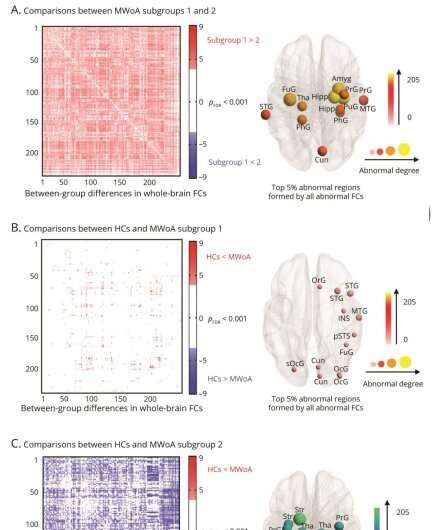This article has been reviewed according to Science X's editorial process and policies. Editors have highlighted the following attributes while ensuring the content's credibility:
fact-checked
peer-reviewed publication
trusted source
proofread
Clustering approach for migraine patients with aura shows promise for personalized electroacupuncture treatment

A collaborative team led by Dr. Liu Jixin of Xidian University, Dr. Zhao Ling of Chengdu University of Traditional Chinese Medicine, and Dr. Hu Li from the Institute of Psychology of the Chinese Academy of Sciences, has developed a novel clustering approach to classify heterogeneous migraines with aura (MWoA) into distinct subgroups, which showed significant differences in response rates to eight weeks of electroacupuncture treatment.
Migraine is a complex disorder with variable symptoms. Although acupuncture has been recommended as an effective alternative to medication for reducing migraine attacks, its efficacy varies widely due to the heterogeneity of migraine. Existing classification strategies based on clinical criteria may not be sufficient to distinguish heterogeneous MWoA patients.
In this study, the researchers proposed a novel approach to classify participants with MWoA based on clinical and functional Magnetic Resonance Imaging (fMRI) data. The research was published in Neurology on June 22.
Specifically, whole-brain functional connectivities (FCs) were estimated from resting-state functional MRI data. Partial least squares correlation analysis was used to integrate clinical measures with brain FCs, and a hierarchical clustering algorithm was used to cluster participants with MWoA into different subgroups.
The researchers found that participants with MWoA could be classified into two distinct subgroups, which showed significant differences in headache frequencies, self-ratings of depression, brain functional connectivities, and response rates to eight weeks of electroacupuncture treatment.
The results suggest that personalized electroacupuncture treatment based on clinical and neuroimaging data may be feasible for the treatment of migraine.
"The novel clustering approach provides a new way to refine the diagnosis of MWoA patients and guide the development of individualized strategies for pain prophylaxis and analgesia," said Dr. Hu, corresponding author of the study.
More information: Jixin Liu et al, Evaluation of a Clustering Approach to Define Distinct Subgroups of Patients With Migraine to Select Electroacupuncture Treatments, Neurology (2023). DOI: 10.1212/WNL.0000000000207484



















